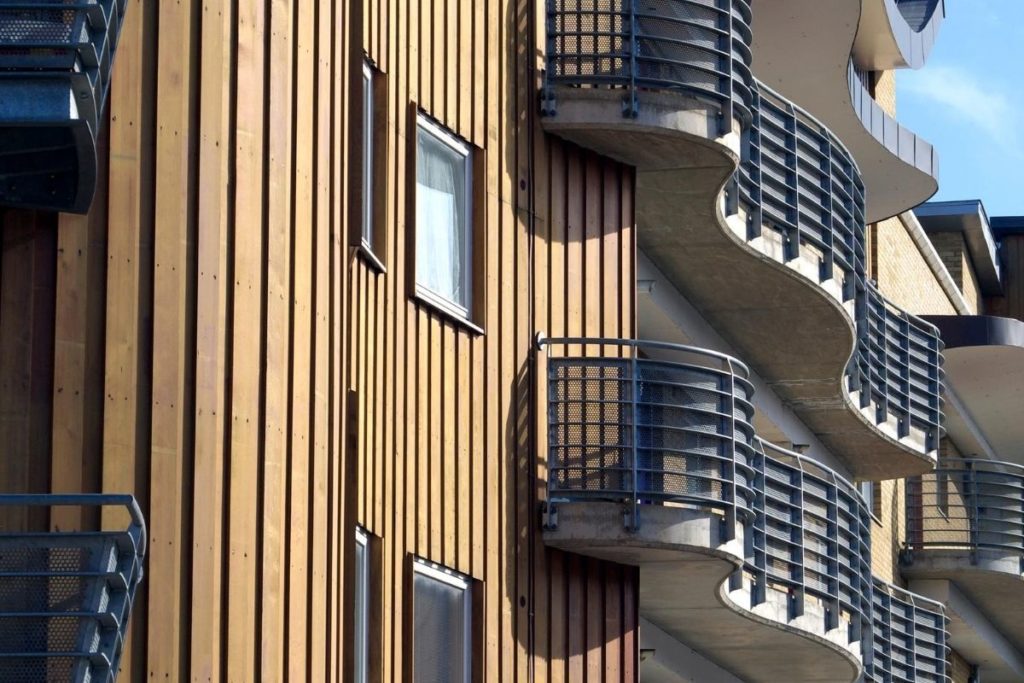This article about NCAT Confirming Biowood cladding is combustible and must be removed has been provided by Faiyaaz Shafiq, JS Mueller & Co Lawyers.
The Case
On 4 August 2020, NCAT’s Appeal Panel upheld a finding by NCAT that Biowood cladding installed on the façade of a multi-storey building are combustible and must be removed: Taylor Construction Group Pty Ltd -v- The Owners-Strata Plan No. 92888 [2020] NSWCATAP 163.
The case involved an appeal brought against the decision of NCAT on 15 November 2019 in which it was held that Biowood cladding installed on the façade of a building were in breach of the statutory warranties under the Home Building Act 1989 (HBA), were combustible and posed an undue risk of fire spreading and that the Biowood cladding had to be replaced with cladding that complied with the statutory warranties and are non-combustible.
Mueller’s represented the successful owners corporation in the first instance case in NCAT and then in the Appeal against the builder and developer.
GET NOTIFIED WHEN WE PUBLISH NEW Q&AS, NEWS AND ARTICLES TO THE SITEBiowood Cladding
In reaching its decision, the Appeal Panel said the following:
- The NCAT decision of 15 November 2019 was correct.
- The Biowood cladding installed on the facade of the building as attachments to external walls were combustible.
- Any fire spread via the external walls where the Biowood cladding is located could enter the building from the façade by windows and balconies from level to level.
- As the Biowood cladding extends up the façade and joins each level they may (if ignited) allow fire spread into the building.
- Accordingly, the Biowood cladding posed an “undue risk” or unwarranted or excessive risk of fire spreading via the façade of the building which constituted non-compliance with the BCA because they “impairs fire resistance”.
Occupation Certificates
The Appeal Panel also confirmed that an occupation certificate issued for a building does not prevent an owners corporation from suing a builder or developer for breach of statutory warranties under the HBA.
In the appeal, the builder argued that NCAT was wrong in allowing the owners corporation to claim that the installation of the Biowood cladding was in breach of the statutory warranties because the building was issued with an interim occupation certificate which created a presumption that the works performed in the building complied with the statutory warranties and all of the relevant codes and standards including the BCA. In other words, the builder said that the occupation certificate was supreme and to bring a claim for a breach of statutory warranties was an impermissible challenge to the validity of the occupation certificate.
The Appeal Panel confirmed the decision of NCAT that occupation certificates do not prevent owners from suing for building defects and in so doing so adopted what the NSW Court of Appeal said in the case of Ku ring-gai Council -v- Chan [2017] NSWCA 226, that the, “occupation certificate does not in terms certify that the building work does not, or is not likely to, contain latent defects.”
Conclusion
The decision in the case sets a precedent that, in effect, means that the use of Biowood cladding material in a building is a breach of the statutory warranties in the HBA on the basis that the material is combustible and creates an undue risk of fire spreading throughout the building. This is also the first reported case where a Court or Tribunal has upheld a finding that a particular type of cladding is combustible. The outcome of the case represents a win for owners corporations and sends another timely warning to builders and developers that use of combustible cladding is fraught with risk that carries with it substantial consequences.
Faiyaaz Shafiq JS Mueller & Co Lawyers E: faiyaazshafiq@muellers.com.au P: 02 9562 1266
This post appears in Strata News #387.
Disclaimer: The information contained in this article is provided for your personal information only. It is not meant to be legal or professional advice nor should it be used as a substitute for such advice. You should seek legal advice for your specific circumstances before relying on any information herein. Contact JS Mueller & Co for any required legal assistance.
Have a question about the definition of a major defect in NSW or something to add to the article? Leave a comment below.
EmbedRead next:
- NSW: Q&A Obtaining Information About a Major Building Defect
- NSW: A Win For Owners Corporations – Major Defects Given a Wide Meaning
- NSW: Q&A Remediation of Serious Building Defect
This article has been republished with permission from the author and first appeared on the JS Mueller & Co Lawyers website.
Visit our Strata Building Defects OR NSW Strata Legislation
Looking for strata information concerning your state? For state-specific strata information, take a look here.
After a free PDF of this article? Log into your existing LookUpStrata Account to download the printable file. Not a member? Simple – join for free on our Registration page.
